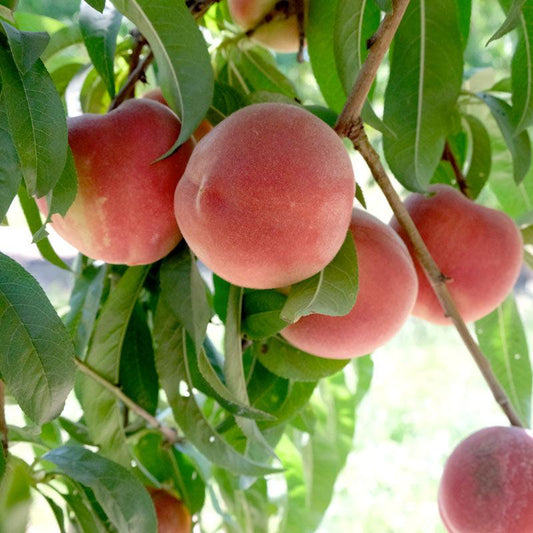Essential Tips for Selecting Bare Root Trees Based on USDA Growing Zones

Selecting bare root trees can be a rewarding way to establish a thriving orchard or add fruitful plants to your garden. These trees are typically sold in a dormant state during late winter to early spring, making them easy to ship to all parts of the country. However, success with bare root trees requires careful selection and consideration of various factors.
Our bare root tree planting guide provides essential tips for selecting bare root trees that will thrive in your garden, especially when you consider your specific USDA growing zone. Understanding your USDA growing zone is crucial for choosing the best varieties that will adapt to your local climate conditions and grow successfully in your area.
Understanding Bare Root Trees
Bare root trees are sold without soil around their roots, which makes them lighter and less expensive to ship than container-grown trees. They are usually available when the trees are dormant, so their growth is temporarily paused, allowing them to be transplanted with minimal shock. The trees have limbs but very little leaf growth. The trees will grow once the weather warms up and their roots are established in their new planting space.
Key Considerations for Selecting Bare Root Fruit Trees

1. Climate Compatibility and USDA Growing Zones
One of the most important considerations when selecting a bare root fruit tree is its compatibility with your local climate. The USDA Plant Hardiness Zones guide the average minimum winter temperatures in your area. Fruit trees are rated for specific zones, and choosing a variety suited to your zone ensures the tree will survive the winter and produce fruit. For example, apples and pears thrive in zones 4-8, while citrus trees are better suited to zones 9-11. If you need help finding the USDA Growing Zone for your ZIP code, you can find your zone here. Always check the recommended USDA growing zone for the fruit tree variety you’re considering.
2. Chill Hours
Chill hours refer to the hours below 45 degrees Fahrenheit that a tree needs to break dormancy and set fruit. Different fruit trees have varying chill hour requirements. For instance, many apple varieties require 800 to 1,000 chill hours, while peaches might only need 400 to 600. It’s important to match the chill hour requirements of the tree to the typical winter conditions in your area. The tree may not produce fruit reliably if your region doesn’t get enough chill hours. You can find can find estimated chill hours for your area here.

3. Choosing Fruit You Like to Eat
While it may seem obvious, choosing fruit trees that produce fruit you and your family enjoy eating is essential. Consider the flavor, texture, and culinary uses of the fruit. If you love fresh peaches, a peach tree might be a perfect addition to your garden. If you prefer making homemade applesauce or pies, consider an apple tree variety that excels in baking. Growing fruit that you look forward to eating will make your gardening efforts more rewarding.
4. Tree Size: Dwarf, Semi-Dwarf, and Standard
Fruit trees come in various sizes, determined by the rootstock they are grafted onto. Dwarf trees are smaller, typically reaching 8-10 feet in height, making them ideal for small gardens or container growing. Semi-dwarf trees grow to about 12-15 feet, providing a balance between size and yield, while standard trees can reach 20 feet or more, offering abundant fruit but requiring more space. Consider your available garden space and how much fruit you want to harvest when selecting the tree size.

5. Rootstock Selection
The rootstock not only affects the size of the tree but also its disease resistance, hardiness, and overall growth characteristics. Some rootstocks are chosen for their ability to thrive in certain soil types or resist specific pests and diseases. Make sure to choose a rootstock that is compatible with your soil conditions and climate. Find more information about rootstocks on our website.
For a side-by-side comparison of rootstock vigor, size control, disease resistance, soil adaptability, and other growth characteristics, see our Tree Rootstock Characteristics Chart.
6. Pollination Needs
Last but definitely not least, some fruit trees require cross-pollination from a different variety. Apples, pears, and sweet cherries often need a compatible pollinator nearby to set fruit. Check the pollination requirements of the tree variety you’re interested in and plan to plant a compatible pollinator if needed.
Conclusion
In summary, selecting bare root trees is a rewarding endeavor that can lead to years of fruitful harvests with proper care and attention. By following a bare root tree planting guide and considering important factors such as climate compatibility, chill hours, personal preferences, tree size, rootstock, and pollination needs, you can set the stage for success. Additionally, understanding your USDA growing zone is crucial to ensure you select the right varieties for your area. For those looking to purchase, check out our selection of bare root trees and start planting today!
Our Fruit Tree Central resource center on the Grow Organic website has many other resources about planting and caring for your bare root trees. If you have questions about other topics, we’re happy to help answer them. Some of our best articles, and our most popular articles and videos are suggested by customers. Please email our customer support team at helpdesk@groworganic.com









